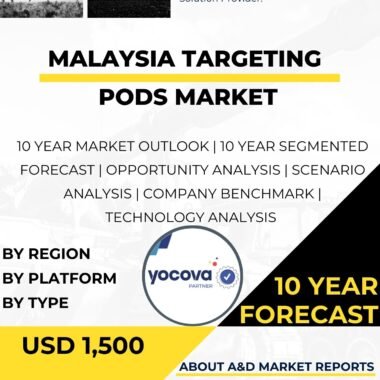Description
The targeting pods market in Japan has witnessed significant growth and strategic importance as the nation seeks to enhance its intelligence, surveillance, and reconnaissance (ISR) capabilities and precision strike capabilities. Targeting pods are sophisticated electro-optical devices mounted on military aircraft to provide real-time surveillance, target tracking, and precision targeting capabilities. These pods play a crucial role in modernizing Japan’s defense and security forces, enabling them to conduct accurate and effective airstrikes, conduct ISR missions, and enhance situational awareness in complex and dynamic operational environments.
The targeting pods market in Japan encompasses a diverse range of targeting pod systems, including airborne pods for fighter aircraft, unmanned aerial vehicles (UAVs), and other military aircraft. These advanced systems are utilized by various branches of the Japan Self-Defense Forces (JSDF), including the Japan Air Self-Defense Force (JASDF) and the Japan Ground Self-Defense Force (JGSDF), to enhance their operational capabilities and maintain a credible defense posture.
One of the primary applications of targeting pods in Japan is in enhancing its precision strike capabilities. Targeting pods enable fighter aircraft and other military platforms to precisely identify and engage targets, minimizing collateral damage and ensuring the effectiveness of airstrikes. These pods provide real-time target tracking, laser designation, and video recording capabilities, enabling pilots to conduct precision strikes with high accuracy.
Moreover, targeting pods play a crucial role in Japan’s intelligence, surveillance, and reconnaissance (ISR) efforts. These pods offer high-resolution imagery and video feed, enabling ISR missions to gather critical intelligence on enemy activities, monitor border areas, and support maritime surveillance. Targeting pods enhance Japan’s situational awareness, enabling timely and informed decision-making by military commanders.
Furthermore, targeting pods contribute significantly to Japan’s interoperability with allied nations, particularly the United States. As a key ally in the region, Japan relies on compatible targeting pod systems to enhance coalition operations, support combined military exercises, and ensure seamless interoperability with allied air forces.
As Japan emphasizes indigenous defense capabilities, the domestic production and development of targeting pods have seen substantial growth. Collaborations between the government, defense industry, and research institutions have fostered innovation, leading to the creation of state-of-the-art targeting pods tailored to Japan’s specific defense requirements.
Japan’s alliance with the United States has also played a significant role in the development of its targeting pod capabilities. Through this partnership, Japan has access to advanced targeting pod technologies, expertise, and support, contributing to the modernization of its defense forces and enhancing interoperability with allied air forces.
The targeting pods market in Japan also benefits from advancements in electro-optical technology, infrared sensors, and data link capabilities. Manufacturers have leveraged these developments to create targeting pods with improved target detection range, image resolution, and data transmission capabilities, making them more effective and adaptable for a wide range of military missions.
However, the targeting pods market in Japan also faces challenges related to cost, maintenance, and technology obsolescence. Targeting pods can be expensive to procure and maintain, requiring investment in research, development, and sustainment. Addressing cost challenges requires efficient resource allocation and cost-effective procurement strategies.
Moreover, managing maintenance and support for targeting pods is crucial for ensuring their optimal performance and reliability in operational environments. Timely maintenance and periodic upgrades are essential to extend the service life of targeting pods and keep them technologically relevant.
Additionally, managing technology obsolescence is critical for ensuring that targeting pods remain capable of meeting evolving mission requirements. Upgrading and modernizing targeting pods with the latest technologies are essential to enhance their capabilities and ensure seamless interoperability with other systems.
In conclusion, the targeting pods market in Japan has witnessed significant growth and strategic importance, driven by the nation’s focus on enhancing its precision strike capabilities and intelligence, surveillance, and reconnaissance (ISR) capabilities. Targeting pods provide critical solutions for precision targeting, real-time surveillance, and enhanced situational awareness, catering to Japan’s specific defense requirements. The collaboration between the government, defense industry, and research institutions, as well as international partnerships with allied nations, fosters innovation and contributes to the growth of the domestic targeting pods market. Addressing challenges related to cost, maintenance, and technology obsolescence is crucial for further enhancing Japan’s targeting pod capabilities and ensuring that its defense and security forces remain equipped with advanced and reliable targeting pod systems to effectively conduct precision strikes, gather critical intelligence, and support military operations. With its strategic focus on indigenous defense capabilities, Japan remains committed to leveraging advanced targeting pod technologies to enhance its precision strike capabilities, maintain ISR superiority, and contribute to regional and global security efforts.




